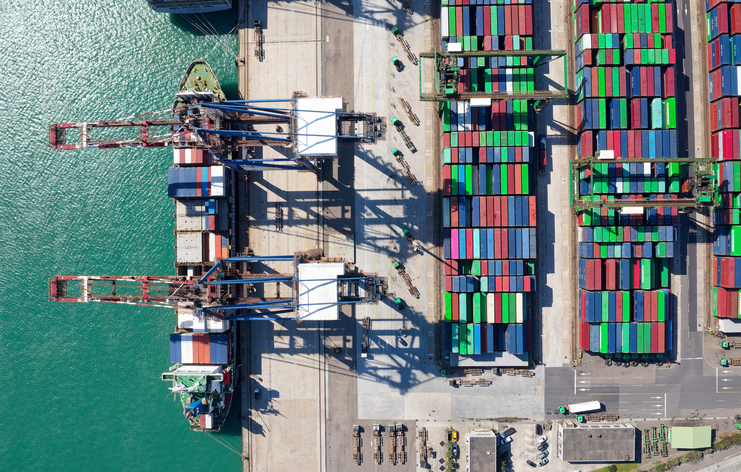The phrase “tariff-proof” might sound ambitious, but supply chain leaders are getting closer every day. Not by eliminating risk, but by building processes that adapt faster than the disruption can spread.
During our Tariff Roundtable discussion, several executives revealed how they’re using tools, teams, and planning strategies to navigate the latest wave of tariff uncertainty.
IBP as an Early Warning System
For many, the integrated business planning (IBP) process has evolved into a cross-functional radar system. With demand planning, pricing, sourcing, and sales all feeding the same system, leaders get earlier visibility into when tariffs might impact cost of goods, margins, or inventory exposure.
One panelist shared how their “tariff group” meets twice a week, scanning both internal and external data. “If there’s a shift, we catch it fast, and we know who’s responsible for what,” he said. “That’s been key to avoiding overreactions.”
Play With the Tools—Don’t Let Them Collect Dust
Tools like our demand and inventory planning platform were referenced frequently—not as “set-it-and-forget-it” software, but as dynamic systems meant to be constantly adjusted.
“You’ve got to mess with it,” one participant said. “If you don’t like what you’re seeing, go back and check your inputs. The tool’s only as good as how you use it.”
The takeaway? Don’t treat your systems as fixed. Instead:
- Update logic regularly based on real-world feedback
- Segment planning based on tariff risk
- Use simulations to anticipate outcomes before making costly decisions
The phrase “trust and validate” came up repeatedly throughout the roundtable discussion. Set your logic, trust your inputs, but keep testing them. The environment changes weekly.
Planning for Both Short-Term and Long-Term Impact
Not all companies on the panel are seeing immediate supplier price increases related to tariffs, but most panelists agreed the writing is on the wall, and smart supply chain leaders are acting now – treating tariff volatility as an active risk rather than a theoretical one.
One panelist shared that their company is proactively investing in additional inventory for SKUs tied to national retailers, customers that typically lock in pricing and won’t accept mid-contract changes. That buffer allows them to maintain service levels and protect margins, even if supplier costs rise suddenly.
Other panelists described using similar forward-looking tactics, including:
- Staggered purchases and safety stock thresholds to hedge against volatility
- Mapping SKUs to HTS codes to pinpoint tariff exposure in advance
- Building inventory specifically where pricing flexibility is limited due to contractual obligations
Several panelists also emphasized the importance of scenario planning and testing. One noted:
“We’ve been modeling margin versus volume tradeoffs in Excel for over a year. So, when the latest tariff wave hit, we weren’t guessing, we already had playbooks ready.”
That experimentation allowed them to simulate the financial impacts of potential cost increases across different customer and product segments, helping them act quickly and with confidence.
Ultimately, the ability to stay ahead of both short-term disruptions and long-term shifts in sourcing economics hinges on one thing: preparedness.
As one panelist put it, “the goal isn’t to react faster, it’s to plan smarter”.
Action Plan: 6 Things to Check in Your System Right Now
As uncertainty continues, panelists offered tactical advice on where to focus your attention inside your planning and inventory systems. Here are six key areas they recommended reviewing immediately:
- HTS Code Accuracy
One panelist highlighted how errors or outdated HTS codes can lead to misapplied tariffs and costly miscalculations. Now is the time to scrub your master data and ensure all SKUs are assigned the correct codes. - Tariff Flagging and Cost Attribution
Make sure your systems are structured to separate base cost from tariff-related cost layers. This allows teams to monitor and manage added expenses transparently and reverse them if tariffs are lifted. - Vendor and Geography-Based Risk Mapping
Several panelists noted they’ve built supplier matrices that correlate SKUs to countries of origin, helping flag exposure when a new tariff hits a specific geography. It’s essential to know which vendors are impacted, and how quickly you can shift sourcing if needed. - Elasticity Modeling and Margin Scenarios
As one panelist shared, excel-based modeling helped them prepare ahead of time. Make sure you’re modeling how price increases might affect sales volumes by product, region, or customer segment. - Inventory Depth on Price-Protected Accounts
For customers that won’t accept mid-cycle cost increases, like national retailers, double-check that you have sufficient on-hand inventory to protect service levels and avoid margin loss. - Simulation Readiness in Planning Tools
Lastly, panelists emphasized using their systems to run “what-if” scenarios regularly. Your tools should allow you to simulate cost increases, transit delays, or vendor changes and instantly see the downstream impact across planning and pricing.
Protecting the Business Means Protecting the Plan
Tariff response isn’t just about avoiding short-term pain—it’s part of a larger shift toward smarter, more resilient planning. The same capabilities that help navigate tariffs also prepare teams for trends like nearshoring, carbon-related cost modeling, and customer-driven ESG requirements. The winners won’t just react faster—they’ll plan further.
Ultimately, good planning isn’t just about numbers, it’s about protecting the business. That means managing service levels, protecting margins, and maintaining trust with both customers and suppliers.
As one panelist noted, “In our industry, you win on service. So, if we don’t manage inventory properly or pass price changes the right way, we lose that edge.”
Planning is no longer just a back-office function. It’s a strategic differentiator and your competitive advantage. And when done right, it becomes your best defense against tariff-driven chaos.













